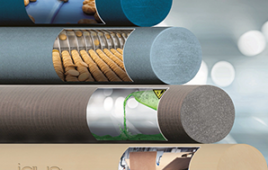New, technologically advanced devices help reduce analysis time, increase accuracy, and offer greater reliability in environmental laboratory applications. However, it’s not often that a new device can reduce analysis time by more than 87%: Deena is an exception.
Deena (and the smaller Deena mini) is the flagship product of Thomas Cain, Omaha, Neb., a company that develops products to help environmental laboratories improve their efficiency and simplify their processes by automating manually repetitive and time-consuming tasks.
The Deena is a fully automated digestion system for mercury and metals sample preparation. It alleviates the bulk of manual sample preparation while reducing the errors associated with sample handling. In addition to dispensing reagents and heating the samples, the device – essentially an X-Y-Z robot — prepares calibration and spike standards, shakes the samples, inspects their color, adjusts their volumes after the digestion process, and records every step taken in the process.
Steve Gunther, a product manager with Thomas Cain, was instrumental in the robot’s design, serving as a design consultant. Gunther was familiar with Kerk Motion Products Inc., Hollis, N.H., a leading manufacturer of non-ball lead screws. “When the design process began, said Gunther, “my prior experience with Kerk made it a natural choice, especially since the company has a proven track record helping machine designers and manufacturers achieve precision movement in their devices.”
Before Deena, technicians had to manually prepare many samples per day for analysis. In addition, standing in front of hoods for up to four hours every day led to fatigue and back problems.
The robotic sampler reduces analysis time from 4 hrs to 30 min – the 87% reduction mentioned earlier. What’s more, 60 samples and standards can be set for digestion during that time. Using an automated sampling and dispensing system and a 95° C heating block, the unit completes the digestion unattended. What’s more, it is highly precise because of the standards dispensing syringe.
Accurate positioning is one of the more important functions in the unit’s operation. It’s particularly critical during one of the last steps in sample preparation, where the samples are filled with a precise volume of de-ionized water to replace any water that evaporated during the preparation process. Consistent positioning is key for the other sensors to achieve the precision required for this step, especially along the X-axis (long axis) and Z-axis.
In the original design phase, engineers gave thought to using a traditional lead screw arrangement to ensure this precise movement. Yet they had doubts about whether a traditional assembly would provide the required precision as well as address time-to-market and assembly needs.
One product that caught Gunther’s eye was Kerk Motion’s RGS® 10000 linear slide. This product is a screw-driven device that offers high linear speed, accurate positioning, and long life in a compact assembly. “It made sense: a ready-to-install lead screw/rail assembly that easily bolted into place,” he recalled. “For a long axis, concerns about end-to-end tolerances and fit would no longer be issues, since the RGS 10000 would bolt to our sheet-metal frame. It was simple, and simple is good.”

Kerk Motion’s RGS® 10000 linear slide is a screw-driven device that offers high linear speed, accurate positioning, and long life in a compact assembly.
The linear slide has a compact profile for excellent torsional stiffness and stability for its size and weight. Its integral mounting base allows support over the entire length if desired, and the length and speed of the RGS is not limited by critical screw speed, allowing high RPM and linear speeds even over long spans.
The linear slide includes a precision aluminum guide and carriage, and is driven by a precision rolled stainless steel lead screw. The moving surfaces include Kerkite® high performance polymers running on Kerkote™ TFE coating. The unit comes standard with a wear-compensating, anti-backlash driven carriage.
Deena’s X-axis consists of a 28-in. long linear slide with a 1-in. pitch (one inch per revolution).
In the Z-axis, the RGS 10000 is 8-½ in. long with a half-inch pitch. The optional dispensing syringe also uses an 8-½ in. RGS 10000.

The Deena automated digestion system prepares samples of mercury and metals for analsys. Precise movement is essential as the robot arm dispenses reagents and water into the samples. A screw driven linear slide ensures that motions are executed with precision.
The linear slide used in the X-axis positions a dispenser head over the vials at each step of the process. The Z-axis uses two slides linked by a chain. This axis functions as an elevator that lowers the samples into the heater block. Consequently, the typical Deena device contains three RGS 10000s, and when the optional syringe is included, the machine uses a total of four.
Currently ten Deena production machines are in the field. “From the beginning, it was more of an intuitive feeling that the RGS 10000 was perfect for what we were considering,” said Gunther. “I’m confident that the cost analysis will bear this out, but even without it, we’re more than certain that we went in the right direction.”
Kerk Motion
www.kerkmotion.com
Filed Under: Ballscrews • leadscrews, Materials • advanced





Tell Us What You Think!